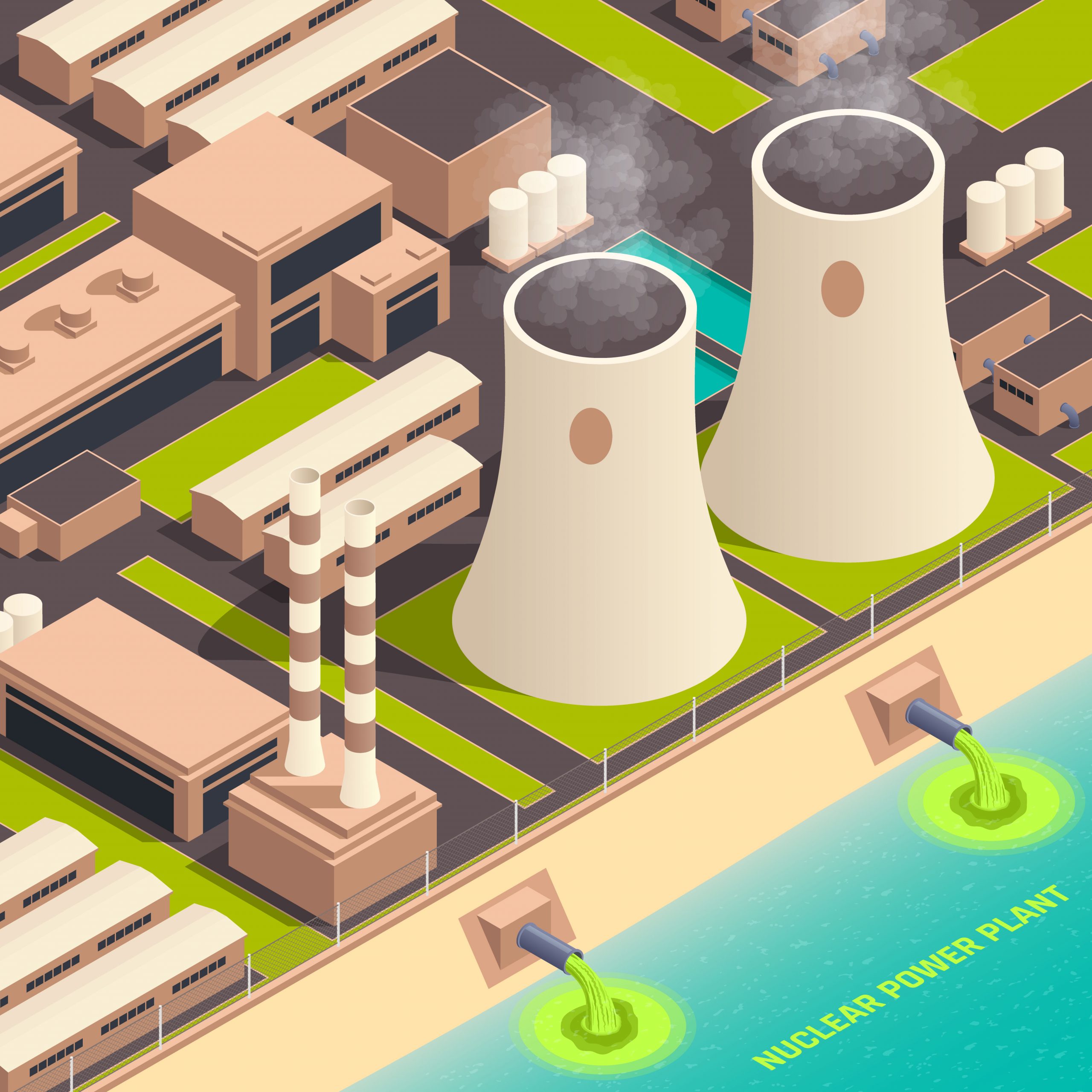News Highlights:
- Union Minister Dr Jitendra Singh stated that the nuclear power potential of India witnessed a quantum jump of nearly 30 to 40 per cent increase within a short span of over eight and a half years.
- In 2013-14 the annual nuclear power generation stood at 35,333 Million Units. By 2021-22 It stands at 47,112 Million Units.
Status of India’s Nuclear Energy:
- About:
- India’s fifth-largest source of electricity, nuclear energy, makes up roughly 3% of the nation’s overall electricity production.
- Over 22 nuclear reactors are located in 7 power stations throughout India, producing 6780 MW of nuclear energy.
- In January 2021, the grid was connected to one additional reactor, the Kakrapar Atomic Power Project (KAPP-3).
- There are four light water reactors and 18 pressurised heavy water reactors (PHWRs) (LWRs).
- KAPP-3 is the largest locally constructed PHWR version and India’s first 700 MWe unit.
- Administered by:
- Nuclear Power Corporation of India Limited -NPCIL, based in Mumbai, is a government-owned corporation of India that is responsible for the generation of electricity through nuclear power.
- The Department of Atomic Energy administers NPCIL, Government of India.
List of Operational Nuclear Power Stations in India:
| Nuclear Power Stations | Location | Operator | Capacity |
| Kakrapar Atomic Power Station – 1993 | Gujarat | Nuclear Power Corporation of India Limited | 440 |
| (Kalpakkam) Madras Atomic Power Station – 1984 | Tamil Nadu | Nuclear Power Corporation of India Limited | 440 |
| Narora Atomic Power Station- 1991 | Uttar Pradesh | Nuclear Power Corporation of India Limited | 440 |
| Kaiga Nuclear Power Plant -2000 | Karnataka | Nuclear Power Corporation of India Limited | 880 |
| Rajasthan Atomic Power Station – 1973 | Rajasthan | Nuclear Power Corporation of India Limited | 1180 |
| Tarapur Atomic Power Station – 1969 | Maharashtra | Nuclear Power Corporation of India Limited | 1400 |
| Kudankulam Nuclear Power Plant – 2013 | Tamil Nadu | Nuclear Power Corporation of India Limited | 2000 |
India’s Recent developments:
- Partnerships with Public Sector Organizations:
- Joint Ventures with PSUs are permitted by the government to advance India’s nuclear programme.
- As a result, the Nuclear Power Corporation of India Limited (NPCIL) is now in two joint ventures with the National Thermal Power Corporation Limited (NTPC) and the Indian Oil Corporation Limited (IOCL).
- Rise of nuclear power generation:
- The Centre has accorded administrative approval and financial sanction for 10 Pressurized Heavy Water Reactors (PHWRs) of 7000 MW capacity each to be set up in fleet mode in Karnataka, Haryana, Madhya Pradesh and Rajasthan at the cost of Rs 105000 crore.
- Indigenous nuclear plants:
- The first thorium-based nuclear power station in the world, called “Bhavni,” is being built near Kalpakkam, Tamil Nadu.
- The first of its type, this plant will be fully indigenous.
- The experimental thorium plant “Kamini” already exists in Kalpakkam.

Challenges to the Adoption of Nuclear Energy:
- Capital Intensive:
- Large amounts of investment are needed in nuclear power stations, which experienced significant cost overruns in more recent nuclear construction.
- Lack of resources:
- India has limited domestic uranium resources, which is the fuel for nuclear reactors.
- This has forced the country to import a significant portion of its uranium requirements, making its nuclear energy program vulnerable to global market conditions and political tensions.
- Will find it tough to compete against natural gas and renewables in the future.
- Land acquisition:
- Land acquisition and location selection for Nuclear Power Plants (NPP) is also a major problem in the country.
- NPPs like Kudankulam in Tamil Nadu and Kovvada in Andhra Pradesh have met with several delays due to land acquisition-related challenges.
- Climate Change:
- Climate change will increase the risk of nuclear reactor accidents.
- During the world’s increasingly hot summers, several nuclear power plants have already had to shut down or be removed from the grid temporarily.
- Further, nuclear power plants depend on nearby water sources to cool their reactors, and with many rivers drying up, those water sources are no longer guaranteed.
- The frequency of such extreme weather events will likely increase.
- Waste from NPP:
- Another side effect of nuclear power is the amount of nuclear waste it produces.
- Nuclear waste can drastically affect life, causing cancerous growths, for instance, or causing genetic problems for many generations of animals and plants.
Conclusion:
- The future’s most significant and rare nuclear fuel, thorium, is a gift to India. It cannot afford to miss the chance to become the global energy hub, which, combined with the largest youth population, will be India’s response to becoming the world’s most powerful economy.
- The world has been experiencing a power and energy crisis recently. Although the specific causes of this catastrophe vary from nation to nation, the result has been a push to boost renewable energy generation and decrease reliance on fossil fuels.
Pic Courtesy: Freepik
Content Source: PIB



